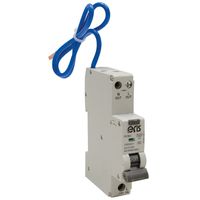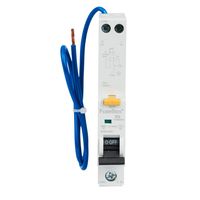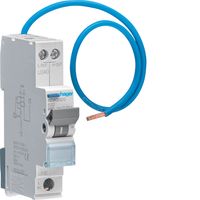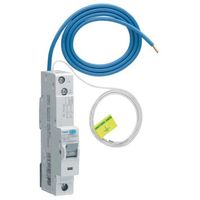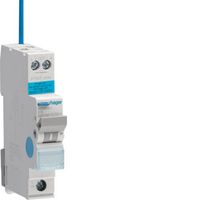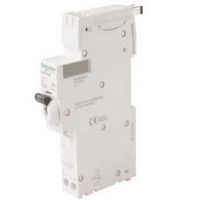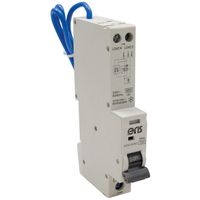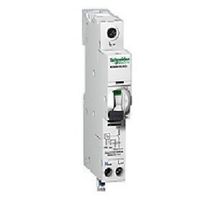RCBOs
RCBO stands for 'Residual Current Breaker with Over-Current'. It protects against two types of fault and in essence combines the functionality of an MCB and RCD, which allows for the protection of both smaller and larger electrical items.
We supply a range of RCBO consumer units, including:
Shop RCBOs today and get free UK delivery on orders over £50 (excluding VAT).
FAQs
How does an RCBO work?
RCBOs are designed to provide both residual current protection and overcurrent protection in a single unit, serving as a combination of a residual current device (RCD) and a miniature circuit breaker (MCB).
They work by monitoring the flow of electrical current in an electrical circuit and will detect earth leakage or overcurrent.
If an earth leakage fault is detected, the RCBO will quickly trip the circuit, preventing electric shocks and other potential hazards.
If there is an overcurrent in the circuit due to short circuits or overloaded conditions, the RCBO trips to interrupt the circuit and protect it from damage.
What are the advantages of using an RCBO?
Safety
RCBOs provide both residual current protection and overcurrent protection, offering comprehensive electrical safety for both people and property.
Versatile
RCBOs can be easily installed in various locations and existing electrical systems, including distribution boards, consumer unit, or individual circuits making them convenient and adaptable to different applications.
Space-saving
Using a single RCBO instead of separate RCDs and MCBs saves space in electrical panels or distribution boards.
What is the difference between an RCBO and an MCB?
Miniature Circuit Breakers (MCBs) provide overcurrent protection but lack residual current protection. However, RCBOs offer the benefits of both MCBs and RCDs in a single device.
What is the difference between an RCBO and a circuit breaker?
RCBO provides dual protection by detecting both overcurrents and residual current faults, whereas a circuit breaker primarily provides short circuit protection, interrupting the flow of electricity when the current exceeds a predetermined level.
RCBOs are commonly used in areas where enhanced protection against electric shocks is required, while circuit breakers provide general electrical protection.
What is the difference between a RCBO and an RCD?
A RCD (Residual Current Device) is solely focused on detecting and quickly disconnecting the power supply when it detects a residual current fault, which can help prevent electric shocks.
An RCBO provides the same function but includes circuit breaker capabilities to protect against overcurrents, such as overloads and short circuits.
What are the maintenance requirements for an RCBO system?
Periodic testing is required to ensure the RCBO is functioning as it should be, including trip time and sensitivity. Regular visual inspections are also useful. Check for any signs of damage, loose connections or signs of overheating such as discolouration and keep the unit free from dust, dirt and debris. There should be adequate ventilation around the device to allow any heat to dissipate.
What are the safety features of an RCBO?
Dual protection
RCBOs combine the capabilities of an MCB and an RCD, providing both overcurrent protection and the ability to detect and rapidly disconnect the power supply in the event of residual current faults. This helps to prevent damage to surroundings and reduces the risk of electric shock.
Selective tripping
RCBOs are designed to selectively trip only the circuit experiencing a fault, allowing uninterrupted power supply to other non-faulty circuits. This feature ensures continuity of electricity in critical areas while isolating the faulty circuit.
Wide range of sensitivities
RCBOs are available with various sensitivity ratings to meet specific application requirements. Sensitivity is measured in milliamperes (mA) and determines the level of leakage current at which the RCBO will trip. Common sensitivity ratings include 10mA, 30mA, and 100mA, depending on the level of protection needed.


